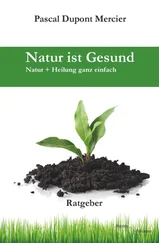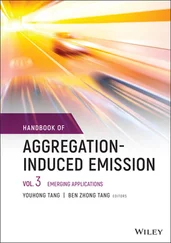The addition of this product could replace current stabilization methods (Moine‐Ledoux et al ., 1997). With this in mind, its effectiveness has been compared with that of two other tartrate stabilization methods: continuous contact cold stabilization and the addition of metatartaric acid ( Table 1.21). This comparison was carried out by measuring spontaneous crystallization after the addition of KHT ( Section 1.6.4). The values obtained indicate the effectiveness of protective colloids, even if they do not necessarily correspond to the instability temperatures. The addition of 15 g/hl of Mannostab to wine 2 or 25 g/hl to wine 1 produced the same spontaneous crystallization temperature, i.e. a stability comparable to that obtained by continuous cold stabilization ( Table 1.21). The addition of metatartaric acid, however, considerably reduced the crystallization temperature.
TABLE 1.20Tartrate Stabilization of Various Wines by Adding Mannostab
| Wines |
Mannostab (g/hl) |
| 0 |
15 |
20 |
25 |
30 |
| 1996 Blanc de Blanc |
Visual test |
** |
– |
– |
– |
– |
|
Δ(K +) (mg/l) |
52 |
72 |
17 |
0 |
0 |
| White vin de table |
Visual test |
** |
– |
– |
– |
– |
|
Δ(K +) (mg/l) |
104 |
53 |
33 |
0 |
0 |
| 1996 White Bordeaux |
Visual test |
** |
– |
– |
– |
– |
|
Δ(K +) (mg/l) |
62 |
21 |
0 |
0 |
21 |
| 1996 White Graves |
Visual test |
** |
** |
– |
– |
– |
|
Δ(K +) (mg/l) |
155 |
52 |
0 |
0 |
62 |
| 1996 White Bordeaux |
Visual test |
** |
– |
– |
– |
– |
|
Δ(K +) (mg/l) |
51 |
0 |
0 |
0 |
0 |
| 1996 Entre Deux Mers |
Visual test |
– |
– |
– |
– |
– |
|
Δ(K +) (mg/l) |
52 |
0 |
0 |
0 |
11 |
Visual observation of crystallization and lowering of potassium concentration after six days at −4°C (Moine‐Ledoux et al ., 1997).
Visual test: **, precipitation; –, no precipitation.
However, metatartaric acid is hydrolyzed in wine and loses its effectiveness, and adding tartaric acid may even facilitate potassium bitartrate crystallization. Under the same conditions, mannoproteins are stable and have a durable protective effect on tartrate crystallization. To demonstrate this difference, white wines treated with metatartaric acid or Mannostab and kept at 30°C for 10 weeks were then subjected to a cold test. Crystallization occurred in the sample treated with metatartaric acid, while the Mannostab sample remained stable ( Table 1.22).
This new treatment process to protect wines from tartrate precipitation has been used experimentally in France since 1997 (Moine‐Ledoux and Dubourdieu, 2002). Treatment of white wine with mannoprotein preparations has been registered in the OIV International Code of Oenological Practice since 2001. Their findings led to authorization of the treatment of wines with mannoproteins from the degradation of yeast cell walls, by OIV in 2005 and by the EU (regulation 606/2009). This is intended to improve wine stability only with regard to its tartaric salts and/or its proteins in case of white and rosé wines. Doses should be determined in advance by the treatment supervisor. For some young red and rosé wines, a pre‐treatment with yeast hulls may be considered in order to increase the treatment's effectiveness. Mannoproteins constitute an alternative to cold stabilization, which consumes a lot of energy. It is also an alternative to metatartaric acid, which has a limited period of effectiveness (up to 18 months depending on the storage conditions of wine).
TABLE 1.21Effect of Different Treatments on the Spontaneous Crystallization Temperature of Various Wines (Moine‐Ledoux et al., 1997)
| Stabilization treatments |
Wine 1 (°C) |
Wine 2 (°C) |
| Control |
−10 |
−11 |
| Mannostab (15 g/hl) |
−21 |
−18 |
| Mannostab (25 g/hl) |
−31 |
−13 |
| Continuous contact cold stabilization |
−28 |
−17 |
| Metatartaric acid (10 g/hl) |
−40 |
−40 |
Wine 1, 1996 Entre Deux Mers; Wine 2, 1996 white Bordeaux.
TABLE 1.22Influence of Keeping a White Wine Supplemented with Metatartaric Acid or Mannostab at 30°C for 10 Weeks on the Tartrate Stability, Estimated by the Decrease in Potassium Concentration After Six Days at −4°C (Moine‐Ledoux et al., 1997)
|
Δ(K +) mg/l, after six days at −4°C |
| Control |
200 |
| Metatartaric acid (10 g/hl) |
260 |
| Mannostab (25 g/hl) |
0 |
1.7.8 The Use of Carboxymethylcellulose
CMC is a polysaccharide. Like metatartaric acid and mannoproteins, its polymer structure gives it protective colloid characteristics. It is obtained by preferential etherification of the primary alcohol functions of glucopyranose units ( Figure 1.23) linked by β ‐1,4‐glycosidic bonds. CMC is therefore characterized partly by the degree of etherification of its alcohol functions, known as the degree of substitution (DS), and partly by its degree of polymerization (DP), i.e. the average number of glucopyranose units per polymer molecule. This mean number indicates that a given CMC, like metatartaric acid, is a polymer with a range of molecular weights.
A DS of 0.65 means that, out of 100 glucopyranose units, 65 have been etherified by sodium chloroacetate in a basic medium, as shown in the reaction diagram ( Figure 1.24).
The DP determines the viscosity of a CMC. Viscosity increases with molecular weight. It also varies according to the cation: divalent cations (calcium, magnesium, iron, etc.) reduce viscosity. The DP determines the molecular weight, which may vary from 17,000 to 1,500,000 Da.
For a CMC with a given DP, the higher its DS, the more cation anchor sites it has, and the more effective it is as a protective colloid (Lubbers et al ., 1993).
In the past, CMCs were poorly defined compounds, with relatively heterogeneous DPs. Their viscosity was unreliable, to the point that they could modify the viscosity of a wine. The CMCs currently on the market have much more clearly defined characteristics, and quality control is more effective, resulting in purer products. Minimum purity is 99.5%, with a sodium content between 7 and 8.9%. Viscosity varies from 25,000 to 50,000 mPa at 25°C, depending on the type of CMC selected. These low values cannot therefore alter the viscosity of the finished beverage.
The production and use of CMCs as a gelatin substitute dates back to the 1940s and 1950s. They are now used in the food and beverage industry (code: E466), at levels up to 10 g/l or 10 g/kg, as well as in cosmetics and pharmaceuticals. The CMC content of alcoholic and nonalcoholic beverages may be as high as 500 mg/l.
Water solubility of CMCs is variable, depending on their degree of substitution and polymerization. They owe their hydrophilic qualities to their highly hydroxylated carbohydrate character. CMCs used in very sweet beverages are less viscous, probably due to the formation of hydrogen bonds between the sugar and the gum. CMC–sucrose interactions depend on the order in which the products are added: if the sugar is dissolved in the water first, its hydrophilic character reduces the solubility of CMC (Federson and Thorp, 1993). This should be taken into account when preparing the concentrated CMC solutions (20–40 g/l) used to treat beverages, such as wine, that require a restricted addition of water (0.05–0.1 l/l).
Читать дальше












